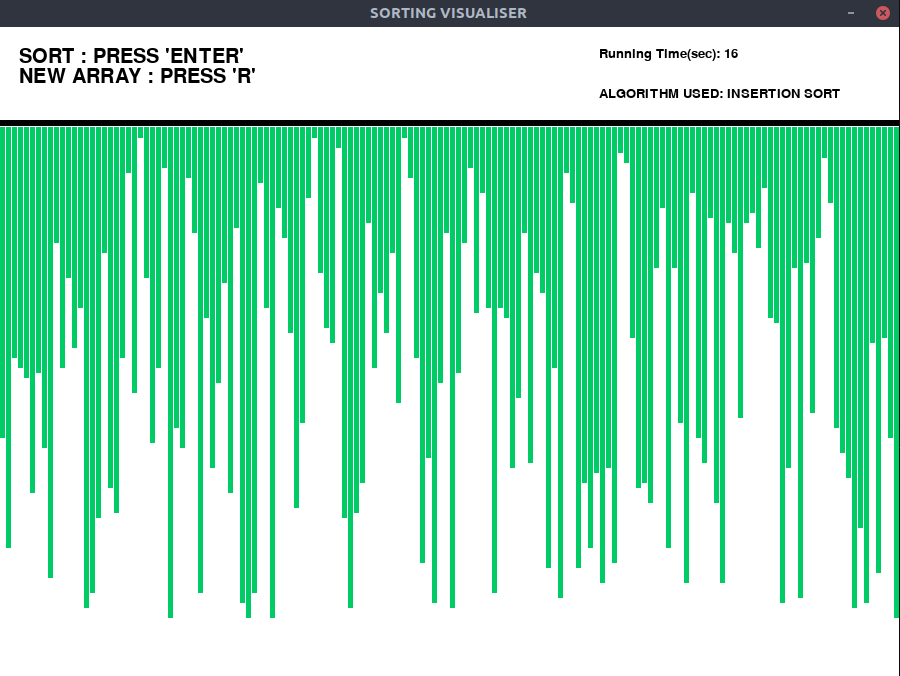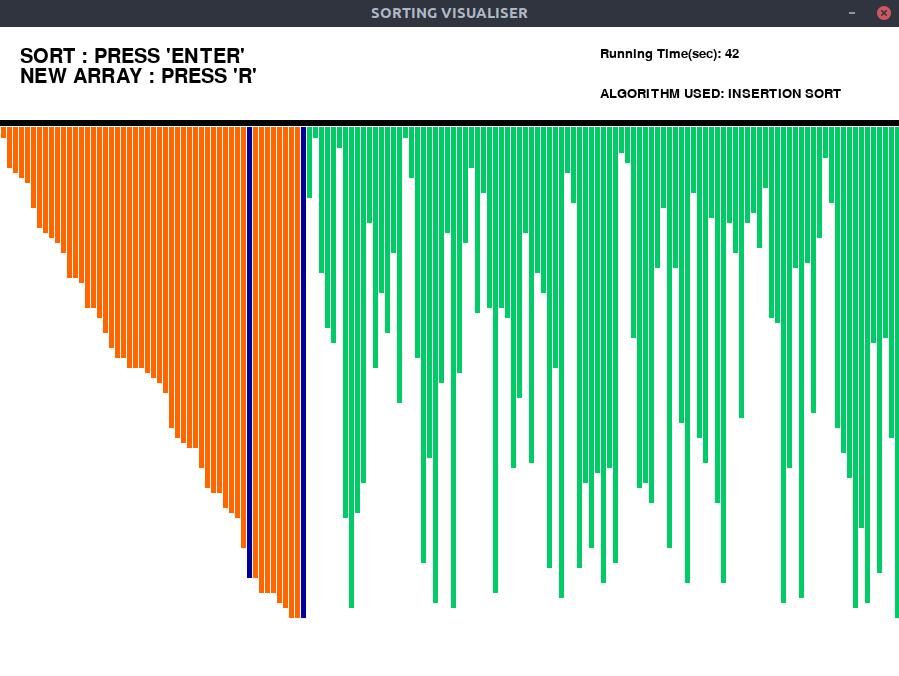通过可视化可以很容易地理解像插入排序这样的算法。在本文中,实现了一个可视化插入排序算法的程序。
图形用户界面 (GUI) 是使用 pygame 库在Python实现的。
方法:
- 生成随机数组并用条形填充 pygame 窗口。条是垂直的直线,代表数组元素。
- 将所有条形设置为绿色(未排序)。
- 使用pygame.time.delay()来减慢算法的速度,以便我们可以看到排序过程。
- 实现一个计时器来查看算法的执行情况。
- 这些操作使用“pygame.event.get()”方法执行,该方法存储用户执行的所有事件,例如启动、重置。
- 蓝色用于突出显示特定时间排序中涉及的条。
- 橙色突出显示排序的条。
观察:
我们可以从插入排序的可视化中清楚地看到,与其他排序算法(如合并排序或快速排序)相比,插入排序非常慢。
例子:
Input:
Press “Enter” key to Perform Visualization.
Press “R” key to generate new array.
Output:
Initial:

Sorting:

Final:

请确保在运行以下程序之前安装 pygame 库。
以下是上述可视化工具的实现:
Python
# Python implementation of the
# Sorting visualiser: Insertion Sort
# Imports
import pygame
import random
import time
pygame.font.init()
startTime = time.time()
# Total window
screen = pygame.display.set_mode(
(900, 650)
)
# Title and Icon
pygame.display.set_caption(
"SORTING VISUALISER"
)
# Uncomment below lines for setting
# up the icon for the visuliser
# img = pygame.image.load('sorticon.png')
# pygame.display.set_icon(img)
# Boolean variable to run
# the program in while loop
run = True
# Window size and some initials
width = 900
length = 600
array =[0]*151
arr_clr =[(0, 204, 102)]*151
clr_ind = 0
clr =[(0, 204, 102), (255, 0, 0), \
(0, 0, 153), (255, 102, 0)]
fnt = pygame.font.SysFont("comicsans", 30)
fnt1 = pygame.font.SysFont("comicsans", 20)
# Function to generate new Array
def generate_arr():
for i in range(1, 151):
arr_clr[i]= clr[0]
array[i]= random.randrange(1, 100)
# Initially generate a array
generate_arr()
# Function to refill the
# updates on the window
def refill():
screen.fill((255, 255, 255))
draw()
pygame.display.update()
pygame.time.delay(10)
# Sorting Algorithm: Insertion sort
def insertionSort(array):
for i in range(1, len(array)):
pygame.event.pump()
refill()
key = array[i]
arr_clr[i]= clr[2]
j = i-1
while j>= 0 and key输出:
如果您希望与专家一起参加现场课程,请参阅DSA 现场工作专业课程和学生竞争性编程现场课程。